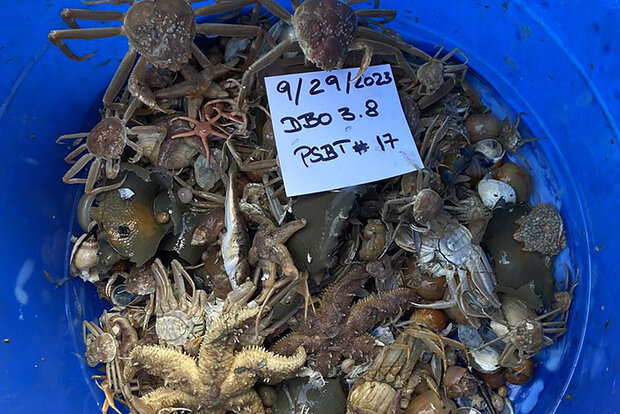How two scientists have advanced marine ecosystems research in the Arctic

Collected critters await examination. Credit: Seth Danielson

Collected critters await examination. Credit: Seth Danielson
In the middle of the cold and wavy Bering Sea, a crane extends over the stern of the R/V Sikuliaq and brings aboard a metal scoop filled with a sample collected from the muddy bottom of the seafloor. Researchers, Jackie, Lee, and colleagues, sort through the mud samples to catalog the hundreds of organisms it contains – clams, worms, amphipods, and brittle stars. Some of the critters will go on to be used in experimental studies on how climate change is affecting metabolism, others will be preserved for genetic and taxonomic analyses, and others will be sampled for concentrations of harmful algal toxins to ensure the safety of shellfish consumption in the area. The remaining scientists on the ship are busy identifying and counting zooplankton, some are filtering water for measures of phytoplankton, and some are keeping track of marine mammal sightings. This is the busy but steady hum of scientific observations aboard a research vessel.